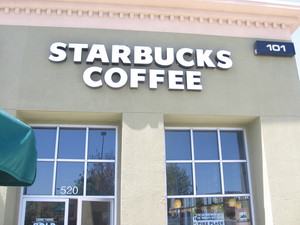Students with autism are exceptional, so extra attention must be given to their special education. The causes are still under research. And the implications on these children’s education are substantial.
Autism Spectrum Disorder is “a developmental disability significantly affecting verbal and nonverbal communication and social interaction, generally evident before age 3, that adversely affects a student’s educational performance. Other characteristics often associated with autism are engagement in repetitive activities and stereotyped movements, resistance to environmental change or change in daily routines, and unusual responses to sensory experiences” (The University of the State of New York: The State Education Department, 2002).
Autism carries a range of severity, from mild to severe, and includes several categories. Children with mild forms may still function in society and school, but may need special education in a specific area of disability, particularly in communication. “Some individuals mildly affected may exhibit only slight delays in language and greater challenges with social interactions” (Autism Society of America, 2008, para. 2-3).
Quite unfortunately, the cause of autism was originally thought to be “disinterested, cold parents who were unable to develop an emotional bond with their children. Sadly, mothers of children with autism were called ‘refrigerator mothers’ and led to believe they were the cause of their children’s disability” (Heward, 2006, p. 274). Now, although the cause is still unknown, “researchers believe several genes, as well as environmental factors such as viruses or chemicals, contribute to the disorder. Studies of people with autism have found abnormalities in several regions of the brain” (Child Development Institute, 2008, para. 14).
Students with autism daily face challenges of processing information, social interaction, handling transitions flexibly, controlling impulses, responding to average teaching methods, staying on task, and managing writing implements. According to Heward (2006), “Children with autism are among the most difficult students to teach. They require carefully planned, meticulously delivered, and continually evaluated and analyzed instruction” (Heward, 2006, p. 275).
It is erroneous, however, to consider autistic students as having only disabilities; they possess many positive, unique attributes. Many autistic people can approach problem-solving in a very creative yet practical way. Therefore, it is important for educators to maximize these gifts, and focus on processing and expressing the information.
Social propriety also confronts these students; prudently arranged inclusion activities afford autistic students opportunity to succeed. Teachers must find a way to make room for the creativity and perspective of autistic students as they interact with other students without disabilities. Both student types will benefit. I, myself, have witnessed significant social growth in one teenager whose creativity was tapped into in the classroom! His classmates, too, have grown in their appreciation for his unique perspective.
Exceptional children with autism face difficulties in daily life at home, school, and in the community. Educators encounter challenges and carefully plan special education to help students with considerable disabilities succeed.
Note: For more information on the renowned Special Educator W. L. Heward, visit his website.
References
(2008). Autism Fact Sheet. Retrieved January 29, 2009, from Child Development Institute Web site: http://childdevelopmentinfo.com/disorders/autism_fact_sheet.shtml
(2008, January 31). Autism FAQ. Retrieved January 29, 2009, from Autism Society of America Web site: http://www.autism-society.org/site/PageServer?pagename=about_FAQ
Heward, W.L. (2006). Exceptional Children: An Introduction to Special Education. Upper Saddle River, NJ: Pearson Prentice Hall.
The University of the State of New York: The State Education Department. (2002). Regulations of the commissioner of education (Parts 200 and 201 relating to the education of students with disabilities). Albany, NY: New York State Education Department: http://www.emsc.nysed.gov/specialed/lawsregs/part200.htm.




